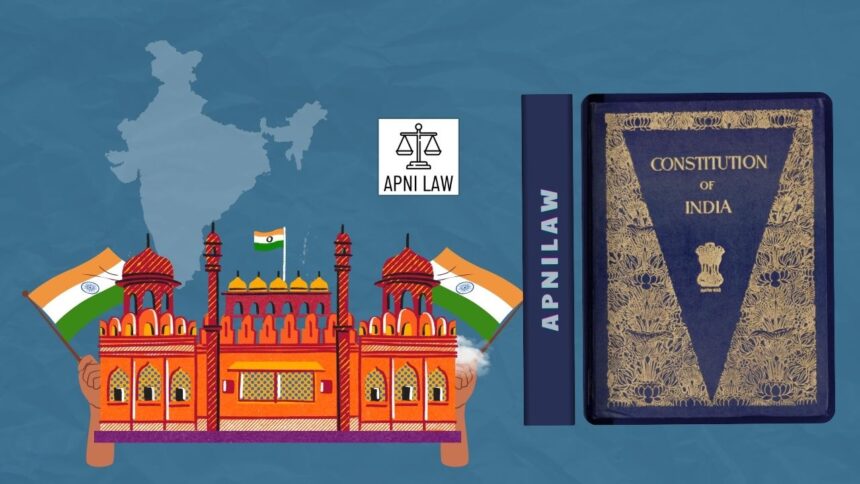The Constitution of India provides a detailed framework for governance, rights, and responsibilities. However, this framework is not static. It evolves through amendments that adjust the Constitution to new realities. The framers of the Constitution designed the amendment process under Article 368 to balance flexibility and rigidity. This balance ensures that the Constitution can adapt without losing its core principles.
Despite this careful design, the amendment procedure in India has faced criticism. Scholars, jurists, and political observers argue that the process gives Parliament excessive power. They point out that the states play only a limited role, and the people have none. Critics also highlight the similarity of the process to ordinary lawmaking, the risk of misuse, and the dependence on judicial interpretation. These concerns raise questions about whether the procedure truly protects democracy or leaves it vulnerable to partisan changes.
Why Is There No Special Amending Body in India?
Many countries establish separate constitutional conventions or assemblies to amend their constitutions. India, however, chose a different path. The power to amend lies solely with Parliament. There is no independent authority or special body dedicated to this task.
This design makes amendments easier to pass, but it also concentrates enormous power in the hands of legislators. Critics argue that something as fundamental as altering the Constitution should not rely on the same institution that makes everyday laws. A separate body could provide broader debate, deeper reflection, and more public participation. The absence of such a body means that amendments often reflect political convenience rather than constitutional necessity.
Why Can Only Parliament Initiate Amendments?
Under Article 368, only Parliament can introduce amendment bills. The states cannot initiate any constitutional amendment. Their role begins only when an amendment affects the federal structure. Even then, they can only ratify the change.
This limitation weakens the federal character of the Indian Constitution. India is a union of states, but the amendment process does not allow them equal participation. In contrast, federations like the United States give states greater powers in constitutional change. Critics argue that this exclusivity reduces the spirit of cooperative federalism. It sidelines state governments in shaping the very document that governs them.
Why Do States Have Limited Consent in Amendments?
For most constitutional changes, Parliament alone has the power to pass amendments. State legislatures are required to ratify only those changes that affect subjects such as the election of the President, distribution of powers, or the judiciary’s structure. Even in these cases, only half of the states need to give their approval.
This system ensures efficiency and prevents deadlock. Yet, critics see it as another sign of central dominance. States often represent diverse regional interests, cultures, and priorities. Excluding them from most amendments weakens their role in constitutional development. The requirement of approval from just half the states makes federal consent symbolic rather than substantive.
What Happens If Parliament Deadlocks on an Amendment?
The Indian Constitution does not provide for a joint sitting of Parliament in case of disagreement between the Lok Sabha and the Rajya Sabha on an amendment bill. If one House rejects the proposal, the bill fails.
This creates the risk of legislative paralysis. Important reforms may remain blocked if one chamber refuses to cooperate. At the same time, the lack of a joint sitting highlights the incomplete nature of the amendment procedure. Critics suggest that such provisions weaken the democratic spirit of compromise and negotiation.
How Is the Amendment Process Similar to Ordinary Lawmaking?
Although amendments require a special majority, the process still resembles ordinary legislation. The bill is introduced, debated, and passed in Parliament, much like any other law. The only difference lies in the majority needed for approval.
Critics argue that constitutional amendments should involve more rigorous safeguards. Ordinary laws deal with routine governance, but amendments reshape the nation’s foundational principles. Treating them almost the same undermines the unique character of the Constitution. This similarity also increases the risk of hasty changes influenced by political pressure.
Why Is the Amendment Procedure Called Sketchy?
The provisions of Article 368 are brief and leave several questions unanswered. Over the years, this has led to disputes and heavy reliance on the judiciary to clarify ambiguities. For instance, debates have arisen over whether certain amendments violate constitutional principles or whether procedural lapses make them invalid.
The Supreme Court has often stepped in to interpret the scope and limits of Parliament’s amending power. While this has enriched constitutional law, it also highlights the sketchiness of the procedure. A clearer framework could have prevented many disputes and ensured greater stability.
How Can the Amendment Procedure Be Misused?
The amendment procedure is neither too rigid nor too flexible. Yet, critics worry that its balance may tilt in favor of misuse. A ruling party with a strong majority in Parliament can push amendments to serve its political agenda. This possibility threatens the long-term values of the Constitution.
India’s history provides examples of such misuse. During the Emergency (1975–1977), the government used its majority to pass sweeping amendments that curtailed fundamental rights and expanded executive power. Although later amendments corrected many of these changes, the episode proved that the process can be exploited. The danger lies not in the text of the Constitution but in how those in power choose to use it.
How Does the Basic Structure Doctrine Limit Amendments?
The Supreme Court responded to these criticisms by developing the basic structure doctrine in the historic case of Kesavananda Bharati v. State of Kerala (1973). The Court ruled that while Parliament has wide powers to amend the Constitution, it cannot alter its basic structure.
The doctrine protects principles like democracy, secularism, separation of powers, and judicial independence. This judicial safeguard prevents Parliament from destroying the essence of the Constitution through amendments. However, critics argue that the doctrine itself lacks clarity. Courts have gradually expanded its meaning, which sometimes creates uncertainty. Even so, it remains the strongest check against the misuse of amendment powers.
What Do These Criticisms Reveal About Indian Democracy?
The criticisms of the amendment procedure reveal an ongoing struggle between flexibility and stability. On one hand, the framers wanted a Constitution that could adapt to changing needs. On the other, they feared that excessive power in Parliament’s hands could damage democracy.
The debate continues as India faces new challenges. Some argue for greater public participation in amendments, perhaps through referendums. Others call for stronger safeguards for state involvement. At the same time, defenders of the current system point out that India has survived numerous amendments without collapsing into chaos.
For any specific query call at +91 – 8569843472
Conclusion
The amendment procedure of the Indian Constitution remains both a strength and a weakness. It allows the Constitution to evolve, but it also raises concerns about central dominance, limited state power, and potential misuse. The absence of a special amending body and the resemblance to ordinary legislation fuel these criticisms.
The basic structure doctrine offers some protection, yet the broader process still appears vulnerable. The question of reforming the amendment procedure deserves serious attention. A more inclusive, transparent, and participatory approach could strengthen the balance between flexibility and rigidity.
Ultimately, the criticisms remind us that the Constitution is not just a legal document. It is the living foundation of Indian democracy. Safeguarding its amendment process is essential to protect the spirit of justice, liberty, equality, and fraternity for future generations.







